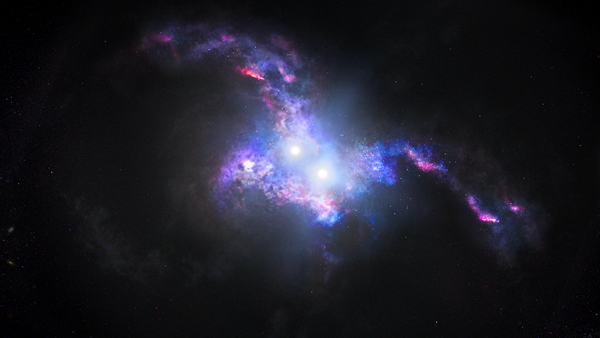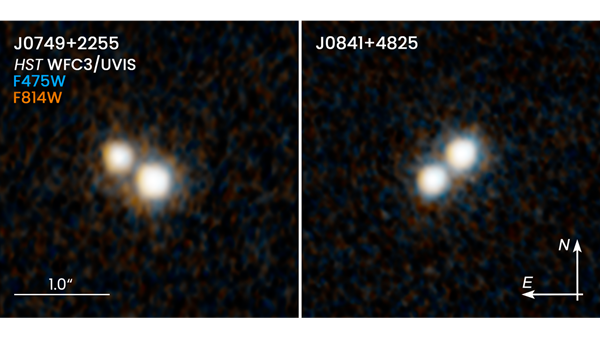All galaxies have monsters lurking in their cores: supermassive black holes that are millions or even billions of times the mass of our Sun. And when galaxies merge, so, too, do these black holes, which slowly creep closer over millions of years.
During that time, the gravitational effects of the merging galaxies and their black holes funnel stars, planets, gas, and dust to the center. That material begins to swirl into the black holes, forming a hot, bright accretion disk around each one that is visible across the universe.
Such a brightly shining disk around a supermassive black hole is called a quasar.
Normally, quasars hang out by themselves, pulling in material from the young galaxies in which they form. And once the galaxy settles down, its quasar shuts down as the black hole consumes all the nearby material and runs out of food. But chaotic events like galaxy mergers can reignite quasars, resulting in a unique double quasar pair that ultimately merges into a single, brighter, and even more massive black hole. Astronomers estimate that one out of every 1,000 quasars is actually a double quasar, although some of them sit too close to one another to be visibly separated at such great distances.
Double quasars — like two pairs recently imaged by the Hubble Space Telescope (shown directly above and depicted in the artist’s concept at the top of this page) are typically seen in the distant universe. But future residents of our own galaxy will get a front-row seat to just such a stunning event in about 4 billion years. That’s when the nearby Andromeda Galaxy will get so close to the Milky Way that both galaxies’ black holes will light up as quasars, shining at least as bright as the Full Moon and blocking many of the stars from view. When these quasars ultimately merge, it will release intense radiation that could spell trouble for any occupied planets throughout the resulting galaxy, dubbed Milkomeda.
Fortunately, we’ve got plenty of little time to get out of town before our galaxy’s date with destruction.











